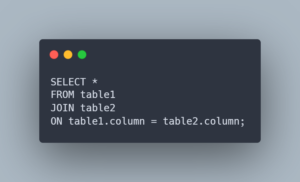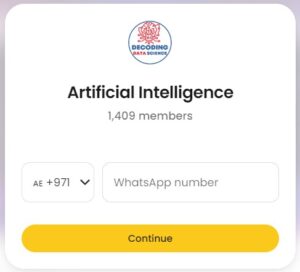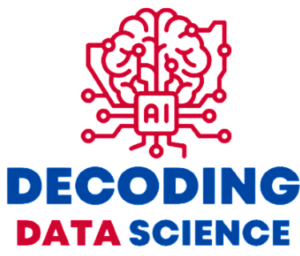Structured Query Language (SQL) is a powerful tool used for managing data in relational databases. One of the key features of SQL is the ability to join tables together, allowing users to combine data from multiple sources into a single query result. In this article, we will explore the different types of SQL joins and how they can be used to retrieve and manipulate data.

What is a SQL Join?
A join in SQL is a way to combine data from two or more tables in a database. It is essentially a way to match up rows from different tables based on some common column or key. The resulting output of a join is a new table that contains all the columns from the original tables, with rows that match based on the join condition.
SQL joins are performed using the JOIN keyword followed by the name of the table to be joined. The syntax for a basic join is as follows:

In this example, table1 and table2 are the names of the tables being joined, and column is the common column that is used to match up rows between the two tables.
Types of SQL Joins
There are several types of SQL joins that can be used to combine data from different tables. The most common types of joins are:
- Inner Join
An inner join returns only the rows that have matching values in both tables being joined. In other words, it only returns the intersection of the two tables.
- Left Join
A left join returns all the rows from the left table and the matching rows from the right table. If there is no match in the right table, NULL values are returned for the columns in the right table.
- Right Join
A right join returns all the rows from the right table and the matching rows from the left table. If there is no match in the left table, NULL values are returned for the columns in the left table.
- Full Outer Join
A full outer join returns all the rows from both tables, including any non-matching rows. If there is no match in either table, NULL values are returned for the columns in the non-matching table.
Tips for Working with SQL Joins
When working with SQL joins, it’s important to keep a few things in mind:
- Make sure that the join condition is correct and that you are joining on the correct column or key.
- Be aware of any NULL values that may be returned from the join and handle them appropriately in your query.
- If you are joining large tables, be prepared for the query to take longer to execute.
Conclusion
SQL joins are a powerful tool for combining data from multiple tables in a relational database. There are several types of joins that can be used depending on the desired output,
Ready to level up your data skills? Enroll in our SQL for Data Science course today and gain the knowledge and expertise needed to manage and manipulate databases with confidence. Start your learning journey now!
If you’re looking to jumpstart your career as a data analyst, consider enrolling in our comprehensive Data Analyst Bootcamp with Internship program. Our program provides you with the skills and experience necessary to succeed in today’s data-driven world. You’ll learn the fundamentals of statistical analysis, as well as how to use tools such as SQL, Python, Excel, and PowerBI to analyze and visualize data. But that’s not all – our program also includes a 3-month internship with us where you can showcase your Capstone Project.
If you’re looking to jumpstart your career as a data analyst, consider enrolling in our comprehensive Data Analyst Bootcamp with Internship program. Our program provides you with the skills and experience necessary to succeed in today’s data-driven world. You’ll learn the fundamentals of statistical analysis, as well as how to use tools such as SQL, Python, Excel, and PowerBI to analyze and visualize data designed by Mohammad Arshad, 18 years of Data Science & AI Experience. But that’s not all – our program also includes a 3-month internship with us where you can showcase your Capstone Project.
Are you passionate about AI and Data Science? Looking to connect with like-minded individuals, learn new concepts, and apply them in real-world situations? Join our growing AI community today! We provide a platform where you can engage in insightful discussions, share resources, collaborate on projects, and learn from experts in the field.
Don’t miss out on this opportunity to broaden your horizons and sharpen your skills. Visit https://nas.io/artificialintelligence and be part of our AI community. We can’t wait to see what you’ll bring to the table. Let’s shape the future of AI together!


Very interesting points you have noted, appreciate it for putting up. “Whatever we conceive well we express clearly, and words flow with ease.” by Nicolas Boileau.